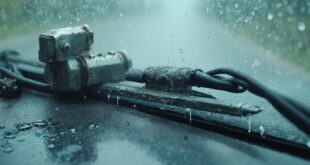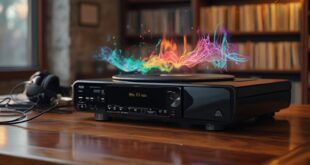Wiring your trailer lights with a 4-way plug is essential for safe towing. First, you'll connect the white wire to the ground, the brown wire for tail lights, the yellow wire for the left turn signal, and the green wire for the right. Make certain to use appropriate gauges and protect wires from damage. After installation, test each connection using a multimeter to verify everything's functioning. Stick around to discover more tips and tricks for a seamless setup!
Understanding 4-Way Trailing Wiring Color Codes
When wiring your trailer with a 4-way plug, it's crucial to understand the color codes associated with each wire.
The white wire serves as the ground, ensuring a solid electrical connection. The brown wire controls your tail and running lights, while the yellow wire is for the left turn and brake light. Finally, the green wire manages the right turn and brake light.
For effective performance, use an 18-gauge wire for the lights and a 16-gauge wire for the ground. Knowing these codes will help you connect everything correctly and avoid potential issues down the line.
4-Pin Trailer Wiring Diagram
Understanding the color codes for a 4-way plug is just the beginning; the next step is to look at the wiring diagram. This diagram visually represents how to connect each wire correctly, ensuring everything functions properly.
Keep in mind that variations may exist across different vehicles, so always verify compatibility.
- A clear layout of wire connections
- Color-coded indicators for easy reference
- Essential points for secure and accurate installation
Using a multimeter can help you verify measurements, making your wiring process smoother and more reliable.
Follow the diagram carefully to avoid any mishaps during installation.
Step-by-Step Installation Process for 4-Pin Trailer Wiring
To successfully install your 4-pin trailer wiring, it's essential to gather the right supplies and follow a clear process. Start with a trailer lighting kit and necessary tools.
First, connect the ground wire using a ring terminal and self-tapping screw. Next, run the other wires, ensuring they're protected from chafing with grommets and clips.
If your vehicle lacks a connector, install the vehicle-side wiring. Finally, connect the trailer to the vehicle, ensuring a secure ground and avoiding direct battery connections.
This will set you up for smooth towing and proper light function.
Testing and Troubleshooting Your Trailer Lights
How can you guarantee your trailer lights are working properly after installation? Start by testing each connection. Activate the lights with someone helping you, ensuring visibility.
If any lights don't function, check the wiring and use a multimeter to verify electrical connections. Remember, proper grounding is essential for operation.
- A dim light flickers ominously in the darkness.
- The multimeter's digital display confirms voltage, bringing peace of mind.
- A friend waves from behind as you signal with your turn lights, ensuring everything's in sync.
Cost and Time Considerations for Installation
After ensuring your trailer lights are functioning correctly, it's time to evaluate the costs and time involved in the installation process.
You can expect to spend between $150 and $300 on supplies if you opt for a professional installation. However, tackling this job yourself can save you labor costs, especially if you have basic mechanical skills.
The installation should take around two hours, and having a friend assist can speed things up. By being organized and prepared, you can efficiently complete the wiring and get your trailer ready for the road without breaking the bank.
Frequently Asked Questions
Can I Use a 4-Way Plug on a 7-Way Trailer Connector?
You can use a 4-way plug on a 7-way connector, but you'll lose some functionality. It's best to verify compatibility and consider upgrading to a 7-way for full features and ideal performance.
What Tools Are Necessary for Wiring Trailer Lights?
To wire trailer lights, you'll need wire strippers, a multimeter for testing, connectors, and a drill with screws for grounding. Having grommets and clips handy helps protect the wires during installation.
How Can I Prevent Wire Chafing During Installation?
To prevent wire chafing during installation, you should use grommets and clips to secure the wires. Make sure to route them away from sharp edges and any moving parts to protect your connections effectively.
Are There Alternative Wiring Systems for Trailers?
Yes, there are alternative wiring systems for trailers, like 5-way or 7-way connectors. Each system serves different needs, so you'll want to assess your trailer's requirements before deciding on the best option.
What Should I Do if My Trailer Lights Flicker?
If your trailer lights flicker, check the connections for corrosion or looseness. Inspect the ground wire and make certain it's secure. A multimeter can help identify electrical issues, so test the circuits for faults.
 Car Service Land Coupons for Oil change, Tires, Wheel alignment, Brakes, Maintenance
Car Service Land Coupons for Oil change, Tires, Wheel alignment, Brakes, Maintenance




